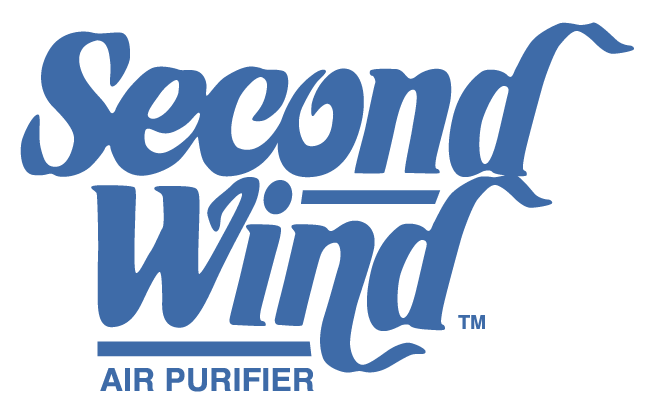ERV / HRV Help Topics
For Tech Support call (866) 476-5101. Be sure to have your model and serial numbers, along with the date of installation ready.
Technology
- How does an ERV/HRV work?
- What is the difference between a HRV (Heat Recovery Ventilator) and an ERV (Energy Recovery Ventilator)?
Maintenance
Miscellaneous
- Why ventilate a house?
- Is a special type of heating or cooling system necessary in order to use an ERV?
- Will an ERV help reduce radon and odors in the home?
- Can an ERV be installed in an existing home, as well as a new home?
- Which should I choose for my home?
- What is the main benefit of an ERV?
- Does every home need an HRV or ERV?
- Are ERV's and HRV's noisy?
- How do I calculate CFM?
Why ventilate a house?
All homes need ventilation. Ventilation systems bring fresh air into your home while also exhausting stale air year around, even when windows and doors are closed! This exchange provides air that keeps occupants healthy, removes odors, reduces moisture, removes indoor pollutants and lowers the relative indoor humidity. Learn more about available models here.
Will an ERV help reduce radon and odors in the home?
Yes, although it’s difficult to quote specific efficiencies for each type of pollutant. The fact that stale indoor air is constantly being replaced by fresh outside air is your assurance that this is taking place.
How often is it necessary to service an ERV?
We recommend about every six months. Simple procedures are fully described on the instructions provided with each unit. These maintenance procedures can be completed by you or your contractor. Here are the general maintenance activities: - Clean the permanent filters and re-coat with adhesive as necessary. - Clean energy transfer core by lightly vacuuming with a soft brush attachment. - Check the fresh air intake vent and clean as necessary.
To watch a video demonstrating how to service your ERV/HRV, click here.
Is a special type of heating or cooling system necessary in order to use an ERV?
No. An ERV can be utilized with any forced air system equipped with a blower and duct system. It can also be used with non-forced air systems as an independent system.
Having said that, dedicated ventilation is ideal. Typically, when dedicated duct work is installed for your new HRV or ERV, fresh air is delivered to the living room and bedrooms, while stale air is removed from bathrooms, laundry room and kitchens.
Can an ERV be installed in an existing home, as well as a new home?
Yes, it can be installed in any home and become an integral part of the heating and air conditioning system. Your heating and cooling contractor can furnish specific details for your home - please use our "Find a Local Contractor" on this site to find one near you.
As stated above: Having said that, dedicated ventilation is ideal. Typically, when dedicated duct work is installed for your new HRV or ERV, fresh air is delivered to the living room and bedrooms, while stale air is removed from bathrooms, laundry room and kitchens.
What is the difference between a HRV (Heat Recovery Ventilator) and an ERV (Energy Recovery Ventilator)?
Heat recovery ventilators (HRV) transfer temperature from the high temperature air to the low temperature air. This system "recovers" some of the heat that would normally be exhausted. An HRV is most desirable in climates and homes that suffer from excessive humidity during cold weather, resulting in condensation on windows and other cool surfaces. An HRV typically recovers 70-80% of the waste heat in the exhaust air from the house.
ERV's have a Enthalpy Core.
Energy recovery ventilators (ERV) transfer both temperature and moisture. Since transferring both temperature and moisture is a benefit in both winter and summer, ERV's are a better choice in all but the most northern climates for providing year-round fresh air to the home. Since they have the ability to lower the humidity content of outdoor air air coming into the home, they reduce the load on the air conditioning system. An ERV typically can recover 70-80% of the energy in the exiting air and deliver that energy to the incoming air.
HRV's have a Polypropylene Core.
Simple rule of thumb: if you heat longer than you cool, choose an HRV. If you cool longer than you heat, choose an ERV.
Which should I choose for my home?
- For a small, tight house in a cold comate, especially a house with a large family, choose an HRV.
- For a large house in a cold climate, especially a house with few occupants, choose an ERV.
- In a hot, humid climate, an ERV will cost a little less to operate during the summer than an HRV.
- In mixed climates, choose either appliance.
Simple rule of thumb: if you heat longer than you cool, choose an HRV. If you cool longer than you heat, choose an ERV.
What is the main benefit of an ERV?
It constantly supplies fresh air to provide a healthy indoor environment by reducing odors and/or indoor pollutants, such as radon, formaldehyde, tobacco smoke, nitrogen dioxides, carbon monoxide and pesticides.
Does every home need an HRV or ERV?
Every home needs ventilation of some kind. Aside from some type of ventilation system (exhaust only, central fan integrated supply system or ERV/HRV) the only other ventilation option is to keep doors and windows open a good portion of each day. Understandably, this is rarely possible because of weather, safety or noise concerns. Installing a GeneralAire® ERV or HRV helps to keep your indoor air fresh, safe and free of pollutants.
Are ERV's and HRV's noisy?
ERV's and HRV's are very quiet to operate. They're manufcatured with a patented DuoTrol™ balancing system, are factory sealed and built with a solid construction. In addition they are installed in your home's HVAC system where they are out of site and away from living spaces.
How do I calculate CFM?
STEP 1: Multiply your home's total Sq. Ft. X .01
STEP 2: Multiply the number of occupants X 7.5
STEP 3: Add the results from STEP 1 & STEP 2. This is your Total CFM.
Example:
- STEP 1: Total Sq. Ft. = 4,200 X .01 = 42
- STEP 2: # Occupants = 4 X 7.5 = 30
- STEP 3: 42 + 30 = 72 Total CFM
How does an ERV/HRV work?
Fresh air is drawn in from the exterior. It is filtered and distributed throughout the house either by a dedicated duct system or through the forced air heating/AC system to bedrooms and living areas.
At the same time, vents located in the kitchen, bathrooms, laundry rooms and other areas producing moisture or pollutants exhaust, through the HRV/ERV an equal amount of stale, humid air to the exterior. (Sometimes air is drawn directly off the return air of a forced air heating/AC system.)
As the two airstreams pass each other in the core of the unit, the fresh air is tempered with the energy recovered from the exhausted air. In addition, the ERV will transfer some moisture to the fresh air if this air is dryer than the exhausted stale air improving comfort in overly dry houses.

In the cooling season the reverse occurs. The fresh air from the exterior is cooled by the exhausted air conditioned indoor air. An ERV will also transfer moisture in the fresh/supply air to the outgoing air if it is dryer, reducing the humidity load on the air conditioning that would otherwise result from the introduction of humid summer air. The process is very silent and provides you with better home air quality and comfort.








